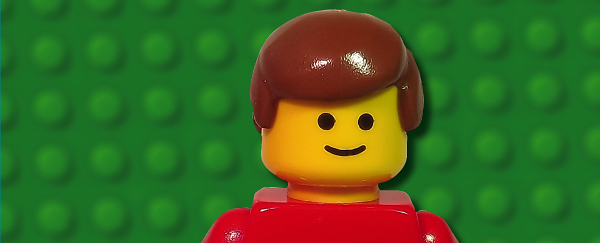THIS WEEK’S MUSE
LEGO

“Our idea has been to create a toy that prepares the child for life – appealing to their imagination and developing their creative urge and joy of creation.” [Godtfred Kirk Cristiansen]
The story of LEGO is the story of a toy that has captured the imagination of children worldwide for almost a century. The story begins in 1932 when Ole Kirk Christiansen, a skilled carpenter, started a company—in Billund, Denmark—making wooden toys for children. Though the toys he made were simple, Christiansen had a philosophy to help children; to prompt learning and development through play. His teenage son Godtfred, who worked with his father in the company, shared his passion for engaging children.
Christiansen named his company LEGO, after the Danish phrase leg godt, which translates as “play well.” (Coincidentally, the word lego is Latin for “I put together.”) It remained a modestly successful wooden toy company for the next decade, but in the late 1940s, Christiansen developed a new philosophy. In 1949 he produced his first plastic building brick and—though he didn’t know it yet—was about to revolutionize play. Now, children could build their own toys, in fact, anything they could imagine. Simple sets of bricks, differing in shape and size, were put together in infinite combinations. Suddenly there was a toy with literally unlimited possibilities.
The connecting brick was patented in 1958, and the design of the primary pieces remains unchanged. Other, more specific parts were added later—wheels, figures, windows—expanding even more imagined possibilities.
The toy was a runaway success, but LEGO had a constant drive to progress. The simple building bricks remained at the toy’s heart, but innovations were continuous. For example, LEGO began working with MIT Media Lab to find new play methods. In the mid-1980s, the collaboration added “intelligence and behavior” to play, and in the ’90s sought to integrate robotic and electronic technologies.
Innovations have continued into the 21st century, with remaining children central. For example, in recent years, LEGO has developed safe environments for young children playing online and specialized products aimed at children with limited abilities to enhance problem-solving and promote teamwork and collaboration in STEM and STEAM learning.
LEGO has also moved into the adult world and is now applying its fundamental philosophy of learning through play to business learning environments. LEGO Serious Play, for example, is a platform designed for use in guided workshops with adults to provoke dialogue, encourage reflection, problem-solving, and professional development in business environments. Today, LEGO is also a champion of sustainability, social responsibility, and ethical business practices. And most recently, LEGO has become an unexpected medium for artists who are increasingly subverting common uses and creating completely unexpected works of art.
LEGO has become much more than a play-based toy by connecting colored bricks. But this simple philosophy sits at the heart of everything LEGO does – using play to spark the imagination – whatever your age.
“Children thrive on play. Given the chance to think, negotiate, adapt to new rules and try again when things don’t go to plan, children develop essential skills that’ll last a lifetime.” [LEGO]
Visit our LEGO Build Room, part of our summer exhibition CAPE COD: OUTSIDE IN, UPSIDE DOWN.
HAPPENING
Wednesday, September 14, collect from 4:30–5:30pm
GOURMET TAKE–OUT: SEAFOOD BRODETTO STEW

With Chef Joe Cizynski
Seafood brodetto with saffron, duck ragout with beans.
$40 – Member, $45 – Non-Member
DETAILS & TICKETS
